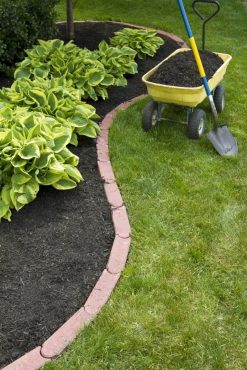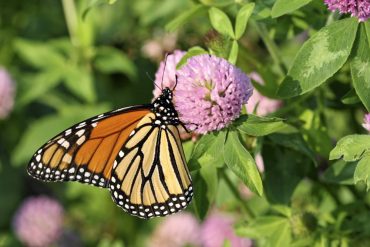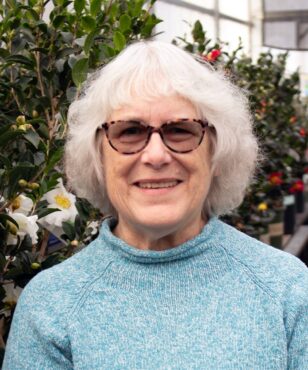 May and June are perfect months to get out into the garden. It’s not too hot and not too cold, and just right for gardening.
May and June are perfect months to get out into the garden. It’s not too hot and not too cold, and just right for gardening.
Pruning, Mulching and Cleaning Up
If you planted tulip and daffodil bulbs last winter, be sure to let the foliage of these beauties turn brown and die back. That nourishes the bulbs for next year — and it’s actually a good practice for all bulbs.
Time to finish up with some additional pruning and cleanup. Years ago, Chris Smith with the WSU Extension taught classes on pruning. An expression he used that is easy to remember is, “Prune out the three Ds — dumb, diseased and dead.” Dumb means something that is crossing, rubbing, growing in the wrong direction, or just doesn’t look quite right. Diseased is rotting tissue or portions that you can tell are not going to make it. Dead and dying tissue is usually easily identified.
Pruning applies mostly to fruit-bearing plants and woody, ornamental shrubs. You wouldn’t normally have to prune landscape trees if you’ve chosen the correct plant for the site — both in size and structure.
Young, woody plants (especially fruit trees) often need training. Always use clean, sharp pruning tools and sanitize them before moving from one plant to another. When consulting a website, book or publication, make sure the information is applicable to the plant you’re pruning and also written for plants in the Pacific Northwest.
Plant Amnesty out of Seattle is an excellent resource for information on when and how to prune woody plants in our area. It has pruning videos on YouTube and a Facebook page. Also consult with local fruit clubs or the pruning experts at your local nursery.
This is the time to mulch also. Wood mulch works well with woody plants. Compost is good for perennials and veggies. Always leave a ring of life around plants though. Mulch left up against stems and trunks will cause problems. When applying mulch, 1-2 inches at a time is a good rule of thumb. Mulching too deeply will create problems.
Local gardeners growing roses recommend a mulch of alfalfa around roses for fertilizer.
Time to visit local nurseries to purchase fuchsias, geraniums, veggie starts and other annual plants for great color all summer long. Remember to keep these plants watered and fertilized since annual plants have short life spans. It’s also a good time to find herbs to purchase.

Farmers Markets
Farmers markets abound this time of year throughout West Sound. Most local markets have WSU Master Gardener clinics on site during market hours.
Lawns
If you forgot to fertilize the lawn in April, it’s not too late. Lawns can be fertilized in May and then again in September. Some websites say to “fertilize lawns three to four times a year” but current research and recommendations are to fertilize in spring (April/May) and again in fall (September).
Five free publications on lawns are available from WSU in PDF format. Visit pubs.wsu.edu and search for the word lawns — you can save these publications for later and read at leisure or keep for future reference.
The publications are: EB0482E Home Lawns, FS098E Kentucky Bluegrass for Use in Home Lawns in Washington State, FS146E Mole Management in Washington Back Yards, FS058E Phosphorus and Home Lawns: Quick Facts and Recommendations and EB0684E Saving Water: Lawns and Other Turf.
Websites to Explore
Since gardeners spend more time outdoors during May through September, they often discover plant and insect questions. Access to the resources of WSU Extension has undergone several changes. Oregon State University also has online resources for gardeners.
Here are a few tips and suggestions on how to access this great information for further reading.
The new home page for WSU Extension is extension.wsu.edu — scroll down a bit to the icons shown in two rows. Click on the flower pot for gardening information. The individual websites for Kitsap and Pierce county extension offices and resources is also found on this website.
Oregon State University offers abundant online information for gardeners at extension.oregonstate.edu/gardening. Some of the information applies to Oregon only but most of it is useful and helpful for West Sound too.
Importance of Pollinators
Pollinators have been in the news frequently for at least the past year. Some of the most important pollinators in West Sound are bees, butterflies, wasps and hummingbirds.
A few pollinator facts provided by the Washington Department of Fish and Wildlife:
- Without pollinators, the human race and all of Earth’s terrestrial ecosystems would not survive.
- Of the 1,400 crop plants grown around the world, i.e., those that produce all of our food and plant-based industrial products, almost 80 percent require pollination by animals.
- Visits from bees and other pollinators also result in larger, more flavorful fruits and higher crop yields.
- In the United States alone, pollination of agricultural crops is valued at $10 billion annually.
- Globally, pollination services are likely worth more than $3 trillion.
- More than half of the world’s diet of fats and oils comes from animal-pollinated plants (oil palm, canola, sunflowers, etc.).
- More than 150 food crops in the United States depend on pollinators, including almost all fruit and grain crops.
- The USDA estimates that crops dependent on pollination are worth more than $10 billion per year.
In well-meaning ways, humans want to purchase and release butterflies to increase the populations. But the following information from WDFW is very important to know and follow:
“Do not purchase and release farm-raised mail-ordered butterflies.
“These butterflies, while possibly a species that occurs locally, do not have the genetics of our local butterflies and could introduce characteristics that are not adapted to this area, such as breeding out nonoverwintering instincts, or they may weaken the genetics of our local populations. They could also introduce a devastating disease, in addition to competing for the ever-dwindling habitat of our local populations.”
What can a gardener do? Plant more plants to attract pollinators to gardens. Avoid pesticides entirely or at least reduce their use. Read labels at local garden centers and nurseries to discover if neonicotinoids have been used and avoid purchasing those plants. Plant more native plants.

































Comments